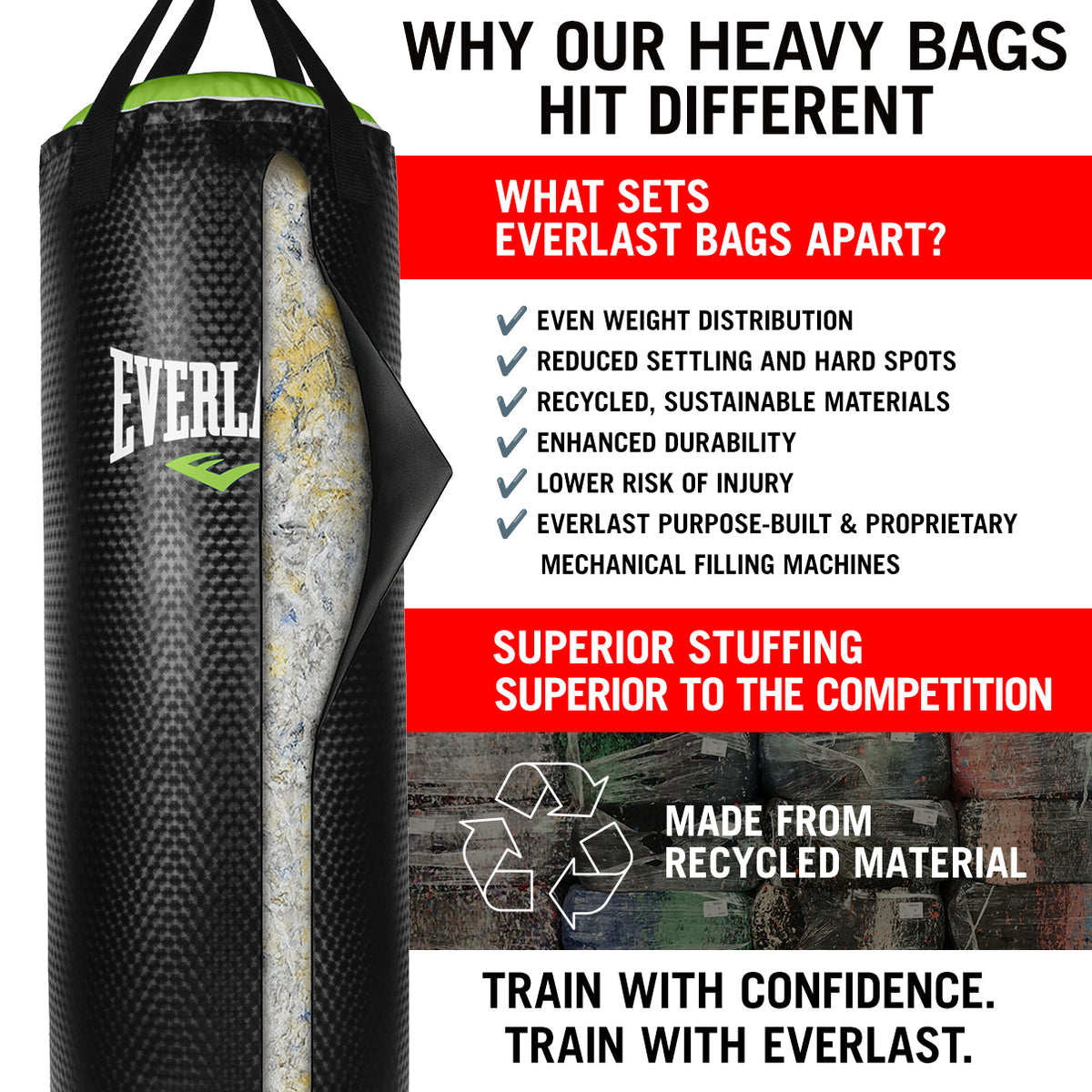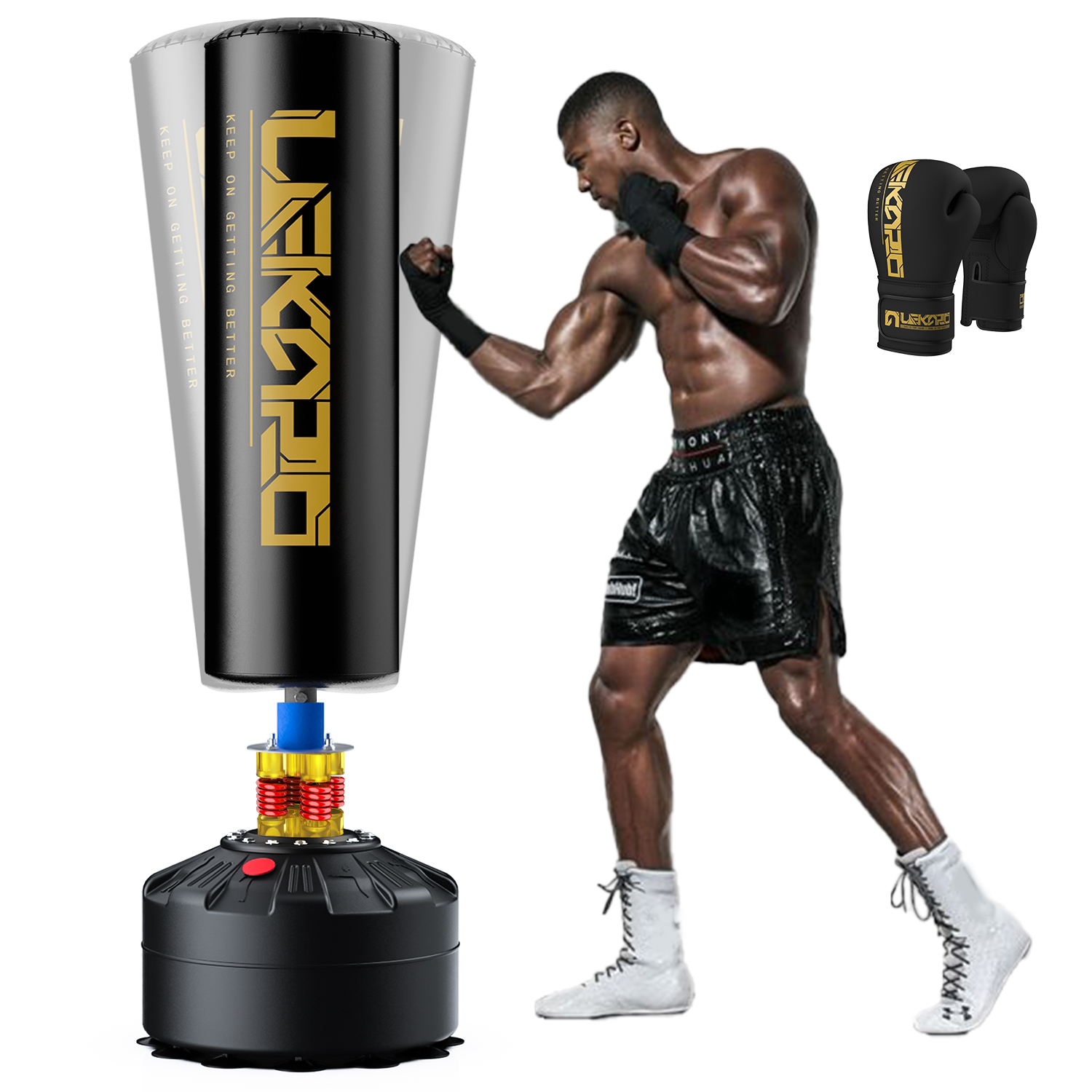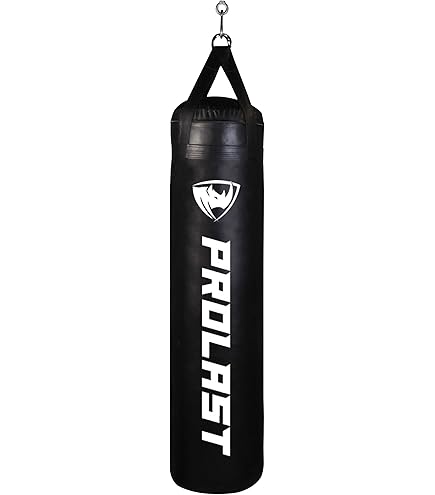Have you ever wondered why some punching bags feel like you’re swinging at a concrete wall while others seem to bounce back effortlessly? The weight of a punching bag can significantly affect your workout experience.
Whether you’re a seasoned boxer or just starting your fitness journey, understanding the right weight for your punching bag is crucial. Imagine throwing punches with perfect form and power, only to be held back by a bag that’s too light or too heavy.
You deserve a workout that challenges you just the right amount, pushing you towards your fitness goals without causing frustration or injury. You’ll discover how heavy punching bags are, why their weight matters, and how to choose the perfect one for your needs. Keep reading, and equip yourself with the knowledge to elevate your training sessions to the next level.
Types Of Punching Bags
Choosing the right punching bag can be a game-changer in your training routine. Each type of bag serves a different purpose and offers unique benefits. Understanding the weight and function of different punching bags can help you maximize your workouts. Let’s dive into the various types of punching bags and what they offer.
Heavy Bags
Heavy bags are the cornerstone of boxing training. These bags typically weigh between 70 to 150 pounds, providing a sturdy target for practicing powerful punches and kicks. They are designed to absorb heavy impacts, making them ideal for building strength and endurance. If you’ve ever wondered how boxers train their knockout punches, the heavy bag is often their secret weapon.
Speed Bags
Speed bags are much lighter, usually ranging from 10 to 15 pounds. These bags are perfect for honing your hand-eye coordination and improving your speed. The rhythmic bounce of the speed bag helps develop timing and accuracy. Have you tried keeping up with the rapid pace of a speed bag? It’s a fantastic way to enhance your reflexes and agility.
Freestanding Bags
Freestanding bags are a versatile option for those who lack space for a hanging bag. These bags typically weigh between 100 to 150 pounds, with a water or sand-filled base to keep them stable. They offer the convenience of mobility and don’t require installation. If you prefer flexibility in your workout space, freestanding bags might be your best bet.
Double-end Bags
Double-end bags are lightweight, usually around 20 to 30 pounds, and are suspended by elastic cords. They are excellent for practicing accuracy and timing. The unpredictable movement of these bags simulates real fight scenarios, challenging your footwork and defensive skills. How good are you at anticipating your opponent’s next move? Double-end bags can help sharpen your instincts.
Reflect on your training goals. Which type of punching bag aligns with your fitness objectives? The right choice can significantly impact your progress and keep your workouts exciting.
Factors Affecting Bag Weight
Punching bags come in various weights, influenced by several factors. Understanding these factors helps in choosing the right bag for your training needs.
Material Composition
The material of a punching bag greatly affects its weight. Leather bags are heavier than synthetic ones. This is due to leather’s denser nature. Canvas bags are lighter but less durable. The material choice impacts not only weight but also durability and cost.
Filling Options
The filling inside a punching bag determines its weight and feel. Sand makes the bag very heavy and firm. Fabric fillings are lighter and softer. Water-filled bags offer a unique experience, with adjustable weight. The filling affects the bag’s impact resistance and usability.
Size And Dimensions
The size of a punching bag influences its overall weight. Larger bags are heavier due to more material and filling. A standard adult heavy bag can weigh between 70 to 150 pounds. Smaller bags, like speed bags, weigh less and are used differently. Choosing the right size depends on your training goals and space availability.
Choosing The Right Bag Weight
Choosing the right weight for a punching bag is essential. It affects your training experience and progress. A bag that’s too heavy can cause strain. Too light, and it won’t offer enough resistance. Understanding the factors involved helps you make a better choice.
Skill Level Considerations
Your skill level plays a big role. Beginners should start with lighter bags. They provide a forgiving target and help develop technique. Advanced users may prefer heavier bags. They offer more resistance and challenge. Evaluate your experience and adjust accordingly.
Training Goals
Define your training goals before buying a punching bag. Are you aiming for strength or speed? A heavier bag helps build power. A lighter bag improves speed and agility. Match the bag weight to your specific goals for optimal results.
Space Availability
Consider the space where you’ll place the bag. Heavier bags need more support and stability. Ensure your ceiling or stand can handle the weight. Lighter bags are more versatile in small spaces. Measure your area and choose a bag that fits comfortably.

Credit: everlast.ca
Weight Recommendations For Different Users
Punching bags vary in weight to suit different users. Beginners often use bags weighing 40-70 pounds. Experienced fighters prefer heavier bags, around 100 pounds or more, for advanced training.
When choosing a punching bag, the weight is crucial for maximizing your training. Selecting the right weight ensures effective workouts and prevents injury. Here’s how you can determine the best punching bag weight based on your skill level.Beginners
As a beginner, starting with a lighter bag is advisable. A punching bag weighing between 40 to 60 pounds is typically ideal. This weight allows you to develop technique and form without overwhelming power. You’ll find that a lighter bag swings more, helping you work on timing and coordination. It also builds your endurance gradually. Remember, your focus should be on learning the basics and enjoying the process.Intermediate Users
If you’ve been training for a while, you might need a heavier bag. A weight range of 70 to 100 pounds is suitable for intermediate users. This allows you to practice combinations and power punches more effectively. A heavier bag provides more resistance, helping you increase your punching strength. It’s also less likely to swing excessively, giving you a stable target for honing your skills. This transition helps you progress and keeps your training exciting.Professional Athletes
For professional athletes, a heavy bag weighing over 100 pounds is often necessary. This weight supports advanced techniques and high-intensity training. It withstands powerful strikes and enhances muscle conditioning. A heavy bag offers minimal swing, allowing for precise, hard-hitting practice. This is essential for athletes aiming to optimize performance and endurance. You might even consider custom weights if you have specific training goals. Selecting the right punching bag weight is a crucial decision in your training journey. Consider your current level, goals, and how the bag feels during workouts. What weight are you considering for your next punching bag?Impact Of Bag Weight On Training
Punching bags vary in weight, impacting training intensity and technique. Heavier bags build strength, while lighter ones enhance speed and precision.
The weight of a punching bag significantly influences your training experience. Choosing the right weight can make or break your workout goals. It’s not just about how heavy the bag is, but how it aligns with your objectives in strength, endurance, and technique.Strength Building
A heavier bag is often recommended for strength training. The resistance helps build power in your punches and kicks. Working with a heavier bag, you engage more muscles, leading to increased muscle growth and strength. Imagine the satisfaction of landing a solid punch. The force required to move a heavy bag mimics real-life resistance, making your training more effective. Are you ready to feel the burn and see real gains?Endurance Training
Lighter bags are your go-to for endurance workouts. They allow for faster, more repetitive movements. This keeps your heart rate up, boosting cardiovascular endurance. Training with lighter bags helps improve your stamina over time. It’s an exhilarating way to push your limits. How long can you keep up the pace?Technique Improvement
Perfecting technique requires precision, and the right bag weight plays a role. A mid-weight bag offers a balance of resistance and movement. This allows you to focus on form and accuracy without compromising on the feedback from the bag. Practicing with a bag that matches your skill level ensures you’re not just throwing punches but refining your technique. Are you ready to elevate your skills to the next level?
Credit: www.walmart.com
Maintenance And Care
Punching bags vary in weight, typically ranging from 40 to 100 pounds. Regular maintenance and care ensure longevity and optimal performance. Keep the bag clean and check for wear and tear to avoid damage.
Punching bags are excellent tools for fitness and training. To ensure they last and perform well, proper maintenance and care are essential. This involves regular inspections, correct storage, and filling adjustments. Proper care keeps your punching bag in top shape, ready for countless workouts.Routine Inspections
Regularly check your punching bag for wear and tear. Look for loose stitching or tears in the material. Inspect the straps and hooks for signs of damage. These checks prevent accidents and ensure the bag remains safe to use. Address any issues immediately to extend the bag’s lifespan.Proper Storage
Store your punching bag in a dry, cool place. Avoid direct sunlight and extreme temperatures. These conditions can damage the material. Hanging the bag is ideal, allowing airflow around it. This prevents moisture buildup, which can lead to mold and unpleasant odors.Filling Adjustments
Adjust the filling to maintain the bag’s weight and shape. Check if the filling has settled unevenly. Redistribute or add filling as needed. This keeps the bag consistent for training. Proper filling ensures the bag absorbs punches effectively, providing a better workout experience.
Credit: www.amazon.com
Frequently Asked Questions
How Much Does A Punching Bag Weigh?
Punching bags typically weigh between 40 to 100 pounds. Choose a weight based on your training needs and experience. Heavy bags offer resistance for strength, while lighter bags improve speed and accuracy. Always consider your space and mounting capabilities when selecting a punching bag.
How Much Did Mike Tyson’s Punching Bag Weigh?
Mike Tyson’s punching bag typically weighed between 100 to 300 pounds. This weight range helped him build strength and power. Tyson’s training focused on developing his knockout ability and endurance. A heavy bag allowed him to practice his powerful punches effectively.
Is 70lbs A Heavy Bag?
A 70lbs bag is considered heavy for boxing and martial arts training. Ideal for developing strength and technique. Suitable for experienced individuals seeking intense workouts. Ensure proper installation to avoid accidents. Always use protective gear to prevent injuries during practice.
Perfect for building endurance and enhancing punching power.
Is A 100 Lb Heavy Bag Enough Reddit?
A 100 lb heavy bag is usually sufficient for most training needs. It provides a good resistance for strength and technique development. Ideal for beginners and intermediates, it supports various boxing and martial arts workouts. Ensure the bag’s quality and installation are suitable for your training intensity.
Conclusion
Choosing the right punching bag weight is crucial. It depends on your training goals. Beginners might prefer lighter bags. They are easier to handle. Heavy bags suit advanced users. They provide more resistance. Always consider your space. Heavier bags need sturdy support.
Think about your budget too. Prices vary with bag weight and brand. Remember, your choice impacts your workout. It’s important to pick wisely. Your fitness journey deserves the best start. Prioritize what feels right for you. Happy training and enjoy the punch!
